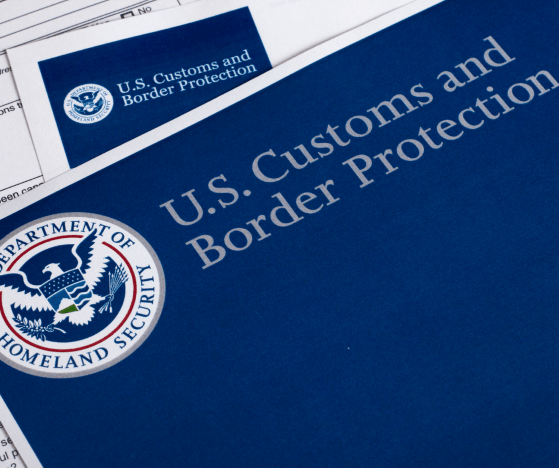Project Summary
The Client was a large importer of industrial products into the USA, with exports to customers globally. U.S. Customs and Border Protection (CBP) were regularly targeting their direct imports by sea freight from China into the U.S. west coast ports for Intensive Examinations. This type of customs examination requires the transfer of the sea containers to a Centralized Examination Station (CES) or Customs-bonded facility and the process was resulting in supply chain delays of 3 to 21 days. The delays had a financial implication, due to demurrage and detention charges by the shipping lines for late return of the empty containers.

The Business Challenge

Business Solution
Phase One
The first phase was to audit all import documentation and identify incomplete, late or missing documents, such as commercial invoices, shipping invoices, packing lists, certificates and bills of lading. Incomplete, late or missing documents can trigger a hold and inspection by CBP. Following the audit, Ian Simmonds implemented a scope of work to introduce complete and accurate document packs. In advance of each shipment, the document pack became available for the freight forwarder and this complied with the new Importer Security Filing, ISF (10+2) that became mandatory at the same time.
In advance of each shipment arriving at the U.S. port, the U.S. Customs Broker received a document pack for clearance formalities, therefore avoiding clearance delays due to late documents.
The audit identified that product classification for customs clearance purposes was not always accurate. Ian Simmonds implemented a scope of work to classify products with the correct Harmonized Tariff Schedule (HTS) Codes and a meaningful product description. Subsequently, relevant shipping documents included the correct product descriptions and HTS codes.
In addition, Ian Simmonds audited international supply chain partners to identify those associated with previous problem shipments and/or violations of U.S. regulations. The audits also identified poor performing partners within the supply chain. Following the audit, Ian appointed a new reliable Freight Forwarder for the China-U.S. route and a new U.S. Customs Broker to provide clearance formalities.
Ian Simmonds also applied for a Continuous Entry Bond with CBP to help expedite shipments and further reduce the risk of examinations.
Deliverable
These new measures reduced customs clearance delays, customs examinations, customs fees, demurrage and detention charges and, in some cases, reduced customs duty payments.
Phase Two: CTPAT Tier 1 and 2
The measures implemented in Phase 1 had dramatically reduced the number customs examinations, but the number of shipments targeted for customs examinations was still slightly above the national average. With CBP frequency increasing the number of shipments they target for customs examinations following 9/11, this further affected matters. Unfortunately, customs examinations have become part of the reality of shipping goods in and out of the U.S.
The client was looking for a further reduction in the number of Customs examinations by CBP and a certification of the import and export supply chains to meet the compliance requirements of major customers within the USA and overseas. As the company was also shipping substantial amounts of goods, it was a good strategy to become a Customs Trade Partnership Against Terrorism (CTPAT) member with CBP.
CBP describe CTPAT as ‘one layer in U.S. Customs and Border Protection’s (CBP) multi-layered cargo enforcement strategy. Through this program, CBP works with the trade community to strengthen international supply chains and improve United States border security. CTPAT is a voluntary public-private sector partnership program which recognizes that CBP can provide the highest level of cargo security only through close cooperation with the principal stakeholders of the international supply chain such as importers, carriers, consolidators, licensed customs brokers, and manufacturers. The Security and Accountability for Every Port Act of 2006 provided a statutory framework for the CTPAT program and imposed strict program oversight requirements.’
Ian Simmonds implemented CTPAT for the company, which involved working with CBP to protect the end-to-end international supply chain, removing security gaps, implementing security measures and best practices. With Ian's assistance, the client had to address a number of security topics across all business activities and partners within the international supply chain. As part of best practices, Ian Simmonds produced an Import Manual, an Export Manual and a Shipping Operations Manual. In addition, Ian presented security profiles that listed action plans to align security throughout the supply chain.
Deliverable
CTPAT Tier 1
The company’s application to join the program received approval.
CTPAT Tier 2
The company received validation of the application within 6 months and was awarded Tier 2 certification. The validation process involved Ian Simmonds auditing a distribution centre in the USA with CBP Officers observing and also taking CBP Officers to Asia to observe Ian's CTPAT auditing of a major manufacturing site, which supplied products to the company.
Phase Three: CTPAT Tier 3
Working with the company to obtain CTPAT Tier 2, Ian Simmonds implemented several new procedures which exceeded the requirements of CTPAT and made the end-to-end international supply chain more efficient. CTPAT Tier 3 is the highest level of CTPAT certification awarded to fully certified, validated CTPAT partners who exceed the minimum standards. Therefore, Ian applied for CTPAT Tier 3 certification. The validation process involved Ian once again taking CBP Officers to Asia to observe CTPAT auditing of another major manufacturing site, which supplied products to the company. Tier 3 certification was given to the company to cover their import and export supply chains.
Deliverable
The various measures implemented removed multimillion-dollar supply chain costs per year. These additional new measures gave the company "green lane" customs treatment with no or infrequent customs examinations. In cases where containers were picked for examination, they received priority and were moved to the front of the examination line.
As security partnership arrangements like CTPAT are called Authorised Economic Operator (AEO) programs, the client was able to make use of “mutual recognition agreements.” Many countries with AEO programs, including the U.S have signed “mutual recognition agreements” whereby multiple countries customs authorities agree to recognize the AEO authorization and provide reciprocal benefits to companies.
Testimonial
"We were impressed with the detailed and extensive procedures which your U.S. businesses have implemented, at Ian’s direction. This is a significant validation of the six years of efforts by Ian to establish a comprehensive import compliance program."
U.S. Customs and Border Protection Officer

